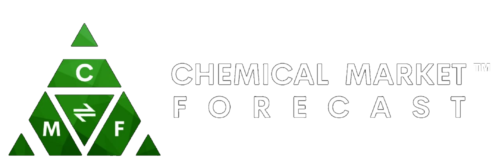Global Extruded Polypropylene (XPP) Foam Market
Extruded Polypropylene (XPP) foam is a type of closed-cell foam that is made by extruding polypropylene resin through a die to create a continuous sheet. This sheet is then processed to create foam that is used in a variety of applications, including packaging, automotive parts, construction, and sports equipment.
The global market for extruded polypropylene foam is expected to grow at a significant rate in the coming years, driven by factors such as increasing demand for lightweight materials, growing use in automotive applications, and rising demand for sustainable packaging materials.
One of the key advantages of XPP foam is its lightweight nature. XPP foam is up to 50% lighter than traditional foam materials, making it an ideal choice for applications where weight is a concern. This makes it popular in the automotive industry for parts such as door panels, headliners, and trunk liners.
In addition to its lightweight nature, XPP foam is also resistant to moisture, chemicals, and UV radiation, making it a durable and long-lasting material. This makes it suitable for use in outdoor applications such as insulation, roofing, and underlayment.
Another key advantage of XPP foam is its sustainability. XPP foam is made from polypropylene, which is a recyclable material. This makes it an attractive option for packaging applications, where sustainability is becoming an increasingly important consideration.
The packaging industry is one of the largest users of XPP foam, with applications in protective packaging for electronics, appliances, and other fragile goods. XPP foam is also used in food packaging, where its moisture resistance and durability make it a suitable choice for products such as meat, cheese, and bakery items.
In the construction industry, XPP foam is used as insulation and underlayment due to its moisture resistance and durability. It is also used in roofing applications as a protective layer against weather and UV radiation.
In the sports equipment industry, XPP foam is used in products such as helmets, padding, and insoles due to its lightweight nature and shock-absorbing properties.
The market for extruded polypropylene foam is highly competitive, with several key suppliers operating in the industry. Some of the key players in the extruded polypropylene foam market include Zotefoams, Sekisui Chemical Co. Ltd., Sonoco Products Company, Toray Industries Inc., and Borealis AG.
The market for extruded polypropylene foam is globally distributed, with several key regions driving the growth of the industry. These regions include North America, Europe, Asia Pacific, and the Rest of the World. North America is a significant market for extruded polypropylene foam, with the United States being the largest contributor to the region’s growth. The growth in the region is driven by the increasing demand for lightweight materials in the automotive and construction industries, as well as the growing use of sustainable packaging materials in the consumer goods industry.
Europe is another key region for the extruded polypropylene foam market, with countries such as Germany, France, and the United Kingdom driving growth in the region. The growth in Europe is mainly driven by the increasing demand for lightweight and sustainable materials in the automotive, construction, and packaging industries.
The Asia Pacific region is expected to grow at the fastest rate in the coming years, with countries such as China, Japan, and India driving the growth. The growth in the region is driven by the increasing demand for lightweight materials in the automotive and construction industries, as well as the growing use of sustainable packaging materials in the consumer goods industry.
The Rest of the World region, which includes Latin America, the Middle East, and Africa, is also expected to see significant growth in the coming years. The growth in the region is driven by the increasing demand for lightweight materials in the automotive and construction industries, as well as the growing use of sustainable packaging materials in the consumer goods industry.
TABLE OF CONTENT
Global Extruded Polypropylene (XPP) Foam Market Report
1 Market Introduction of Global Extruded Polypropylene (XPP) Foam Market Report
2 Market Segmentation of Extruded Polypropylene (XPP) Foam Market Report
2.1 Extruded Polypropylene (XPP) Foam Market Segmentation By Region
2.2 Extruded Polypropylene (XPP) Foam Market Segmentation By Type
2.3 Extruded Polypropylene (XPP) Foam Market Segmentation By Crop Type
3 Cost Structure of Global Extruded Polypropylene (XPP) Foam Market Report
4 Country Analysis of Global Extruded Polypropylene (XPP) Foam Market Report
4.1 China
4.1.1 Extruded Polypropylene (XPP) Foam Market Size in China
4.1.2 Extruded Polypropylene (XPP) Foam Market Trends & Analysis in China
4.1.3 Key Extruded Polypropylene (XPP) Foam companies in China
4.1.4 Regulatory Framework of Extruded Polypropylene (XPP) Foam Market in China
4.2 Germany
4.2.1 Extruded Polypropylene (XPP) Foam Market Size in Germany
4.2.2 Extruded Polypropylene (XPP) Foam Market Trends & Analysis in Germany
4.2.3 Key Extruded Polypropylene (XPP) Foam companies in Germany
4.2.4 Regulatory Framework of Extruded Polypropylene (XPP) Foam Market in Germany
4.3 France
4.3.1 Extruded Polypropylene (XPP) Foam Market Size in France
4.3.2 Extruded Polypropylene (XPP) Foam Market Trends & Analysis in France
4.3.3 Key Extruded Polypropylene (XPP) Foam companies in France
4.3.4 Regulatory Framework of Extruded Polypropylene (XPP) Foam Market in France
4.4 Italy
4.4.1 Extruded Polypropylene (XPP) Foam Market Size in Italy
4.4.2 Extruded Polypropylene (XPP) Foam Market Trends & Analysis in Italy
4.4.3 Key Extruded Polypropylene (XPP) Foam companies in Italy
4.4.4 Regulatory Framework of Extruded Polypropylene (XPP) Foam Market in Italy
4.5 Netherland
4.5.1 Extruded Polypropylene (XPP) Foam Market Size in Netherland
4.5.2 Extruded Polypropylene (XPP) Foam Market Trends & Analysis in Netherland
4.5.3 Key Extruded Polypropylene (XPP) Foam companies in Netherland
4.5.4 Regulatory Framework of Extruded Polypropylene (XPP) Foam Market in Netherland
4.6 Russia
4.6.1 Extruded Polypropylene (XPP) Foam Market Size in Russia
4.6.2 Extruded Polypropylene (XPP) Foam Market Trends & Analysis in Russia
4.6.3 Key Extruded Polypropylene (XPP) Foam companies in Russia
4.6.4 Regulatory Framework of Extruded Polypropylene (XPP) Foam Market in Russia
4.7 Canada
4.7.1 Extruded Polypropylene (XPP) Foam Market Size in Canada
4.7.2 Extruded Polypropylene (XPP) Foam Market Trends & Analysis in Canada
4.7.3 Key Extruded Polypropylene (XPP) Foam companies in Canada
4.7.4 Regulatory Framework of Extruded Polypropylene (XPP) Foam Market in Canada
4.8 Mexico
4.8.1 Extruded Polypropylene (XPP) Foam Market Size in Mexico
4.8.2 Extruded Polypropylene (XPP) Foam Market Trends & Analysis in Mexico
4.8.3 Key Extruded Polypropylene (XPP) Foam companies in Mexico
4.8.4 Regulatory Framework of Extruded Polypropylene (XPP) Foam Market in Mexico
4.9 Singapore
4.9.1 Extruded Polypropylene (XPP) Foam Market Size in Singapore
4.9.2 Extruded Polypropylene (XPP) Foam Market Trends & Analysis in Singapore
4.9.3 Key Extruded Polypropylene (XPP) Foam companies in Singapore
4.9.4 Regulatory Framework of Extruded Polypropylene (XPP) Foam Market in Singapore
4.10 United Kingdom
4.10.1 Extruded Polypropylene (XPP) Foam Market Size in United Kingdom
4.10.2 Extruded Polypropylene (XPP) Foam Market Trends & Analysis in United Kingdom
4.10.3 Key Extruded Polypropylene (XPP) Foam companies in United Kingdom
4.10.4 Regulatory Framework of Extruded Polypropylene (XPP) Foam Market in United Kingdom
4.11 Switzerland
4.11.1 Market Size in Switzerland
4.11.2 Market Trends & Analysis in Switzerland
4.11.3 Key Extruded Polypropylene (XPP) Foam companies in Switzerland
4.11.4 Regulatory Framework of Extruded Polypropylene (XPP) Foam Market in Switzerland
4.12 Brazil
4.12.1 Market Size in Brazil
4.12.2 Market Trends & Analysis in Brazil
4.12.3 Key Extruded Polypropylene (XPP) Foam companies in Brazil
4.12.4 Regulatory Framework of Extruded Polypropylene (XPP) Foam Market in Brazil
4.13 USA
4.13.1 Market Size in US
4.13.2 Market Trends & Analysis in US
4.13.3 Key Extruded Polypropylene (XPP) Foam companies in US
4.13.4 Regulatory Framework of Extruded Polypropylene (XPP) Foam Market in US
4.14 Japan
4.14.1 Market Size in Japan
4.14.2 Market Trends & Analysis in Japan
4.14.3 Key Extruded Polypropylene (XPP) Foam companies in Japan
4.14.4 Regulatory Framework of Extruded Polypropylene (XPP) Foam Market in Japan
4.15 South Korea
4.15.1 Market Size in South Korea
4.15.2 Market Trends & Analysis in South Korea
4.15.3 Key Extruded Polypropylene (XPP) Foam companies in South Korea
4.15.4 Regulatory Framework of Extruded Polypropylene (XPP) Foam Market in South Korea
4.16 India
4.16.1 Market Size in India
4.16.2 Market Trends & Analysis in India
4.16.3 Key Extruded Polypropylene (XPP) Foam companies in India
4.16.4 Regulatory Framework of Extruded Polypropylene (XPP) Foam Market in India
4.17 Thailand
4.17.1 Market Size in Thailand
4.17.2 Market Trends & Analysis in Thailand
4.17.3 Key Extruded Polypropylene (XPP) Foam companies in Thailand
4.17.4 Regulatory Framework of Extruded Polypropylene (XPP) Foam Market in Thailand
4.18 Russia
4.18.1 Market Size in Russia
4.18.2 Market Trends & Analysis in Russia
4.18.3 Key Extruded Polypropylene (XPP) Foam companies in Russia
4.18.4 Regulatory Framework of Extruded Polypropylene (XPP) Foam Market in Russia
4.19 Malaysia
4.19.1 Market Size in Malaysia
4.19.2 Market Trends & Analysis in Malaysia
4.19.3 Key Extruded Polypropylene (XPP) Foam companies in Malaysia
4.19.4 Regulatory Framework of Extruded Polypropylene (XPP) Foam Market in Malaysia
4.20 Saudi Arabia
4.20.1 Market Size in Saudi Arabia
4.20.2 Market Trends & Analysis in Saudi Arabia
4.20.3 Key Extruded Polypropylene (XPP) Foam companies in Saudi Arabia
4.20.4 Regulatory Framework of Extruded Polypropylene (XPP) Foam Market in Saudi Arabia
5 Extruded Polypropylene (XPP) Foam Market Trends
5.1 Extruded Polypropylene (XPP) Foam Market Trends- Key Drivers
5.2 Extruded Polypropylene (XPP) Foam Market Trends- Key Restraints
5.3 Extruded Polypropylene (XPP) Foam Market Trends- Key Challenges
5.4 Porter’s Five Forces Analysis of Extruded Polypropylene (XPP) Foam Market
5.5 PEST Analysis- Extruded Polypropylene (XPP) Foam Market
6 Extruded Polypropylene (XPP) Foam Market Forecast
6.1 Extruded Polypropylene (XPP) Foam Market Forecast By Region
6.1.1 North America
6.1.2 Europe
6.1.3 APAC
6.1.4 Middle East
6.1.5 ROW
6.2 Extruded Polypropylene (XPP) Foam Market Forecast By Type
6.2.1 Fertilizer
6.2.2 Pesticide
6.3 Extruded Polypropylene (XPP) Foam Market Forecast By Crop Type
6.3.1 Fruits & Vegetables
6.3.2 Oilseed and Pulses
6.3.3 Cereals & Grains
6.3.4 Other
7 Supply Chain of the Extruded Polypropylene (XPP) Foam Market Analysis
8 Opportunity Analysis
9 Scenario Analysis
10 Key Company Profiles
11 Strategic Conclusions – Extruded Polypropylene (XPP) Foam Market Report
12 Abbreviations used in Extruded Polypropylene (XPP) Foam Market Report






Reviews
There are no reviews yet.